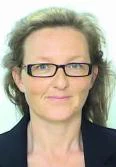
Yesterday morning I participated in the “Ring the Bell for Gender Equality” event at the opening of the Mongolian Stock Exchange. A global event sponsored by the IFC and other partners*, the event highlights how economies and individual companies benefit from efforts to close gender gaps in their operations and governing structures.
Earlier I had dug out my notes from a survey of listed companies conducted in 1996. Only 25 of the 249 companies we surveyed counted women as general directors. Today, women lead around six percent of the top 100 listed firms – that is, fewer than 20 years ago. This does not mean that there has not been progress. The last time the World Bank Group enterprises surveys were done, Mongolia had a similar or larger share of firms with women in top management. This number is higher than the region’s average, but such leadership roles were more heavily weighted to smaller firms. Whereas 31 percent of medium-sized firms – that is, those with 20-99 employees – had female top managers, only 17 percent of firms with over 100 employees had women in senior management.
Getting to equal at the top requires more systematic scrutiny of the factors that support or hinder women’s economic empowerment throughout their lives. No one is born a CEO.
So, where are the gender gaps?
The World Bank Group’s Women, Business, and the Law database provides information on discriminatory prohibitions, or lack of protections, across countries. Compared to many, Mongolia is constrained by fewer legal differences, save for gender-differentiated retirement ages and a few others. Beyond the impact on retirement benefits, signaling shorter working lives does not help women who aspire to leadership roles.
Obstacles face those aspirational women. A study of SMEs by the IFC suggests that women-owned firms are perceived by lenders as having better repayment prospects, but their smaller sizes prompt lenders to consider them as riskier. The result? Smaller loans, higher rates, or a higher requirement for collateral.
The divergence of labor force participation between men and women also highlights stark differences. In Mongolia, women are less likely than men to actively participate in the labor market. Between 1996 and 2015, the gender gap in labor force participation rates more than doubled, from 4.8 to 12.6 percentage points. Employed women also have consistently lower average earnings than employed men; in 2015, men on average earned 12.5 percent more per month. Jobs typically pursued also vary by gender. Women, particularly in rural areas, have in informal sector jobs or unpaid family work, and are less active in entrepreneurial endeavors. Moreover, dominance in different sectors or professions contributes to the gender pay gap.

Note: Real earnings are expressed in 2015 consumer prices. Data on earnings are not available for 2013.
These empirical facts help us understand where the disparities are, but not why there are disparities.
More in-depth research helps. One such study, Perceptions of Precariousness—A Qualitative Study of Constraints Underlying Gender Disparities in Mongolia’s Labor Market, uses biographical interviews and focus group discussions to investigate the constraints underlying these gender disparities. According to the report, factors that contribute to constraints include social norms, such as prevailing views on the roles of men and women with respect to marriage, household and family-care duties, and the mismatch between these norms and suitable career choices. The constraints also include inadequate government support services and programs. Society expects women to devote most of their lives to supporting husbands and raising children. Some women manage also to maintain a successful career, but many others view such balance as hampered by the quality and quantity of eldercare and childcare facilities.
This finding complements other World Bank research on pre-primary education in Mongolia. While access to preschool education has improved overall, the most disadvantaged and vulnerable children remain excluded from the system. The cost of such exclusion accrues not only to the child, but to caregivers who are kept out of the labor market, and to society.
Getting to equal in the labor market would not only empower women, it would improve efficiency of the market itself. But what can be done to get there?
Let’s start with strengthening enforcement of nondiscrimination rules in hiring, and building in stronger monitoring of gender-specific indicators. The market would work better if labor-market intermediation services had a stronger client orientation, with monitoring and analysis continually tracking progress and weaknesses.
As many microentrepreneurs are women, easing access to finance and providing targeted training could help them thrive and prepare some for even larger roles.
Expanding the quality and quantity of eldercare and childcare services, as well as broadening access to early childhood education by targeting the most underserved rural areas, would enable more women to continue working.
Social norms change slowly. Efforts to influence gender norms and attitudes among employers, human-resource managers, and the wider population should be part of the strategy. Awareness campaigns, public discussions, and training will help narrow gender gaps and improve human resource management professionalism.
One other gender gap warrants mentioning. In Mongolia, women are more likely than men to seek tertiary education. Addressing the gender gaps in the labor market, with consequent effects on the cohort ready for leadership positions, will help Mongolia make the most of its most valuable resource: its people.
~~
* The “Ring the Bell for Gender Equality” event series is a partnership of the Sustainable Stock Exchanges Initiative, together with the United Nations Global Compact, UN Women, the IFC, Women in ETFs and the World Federation of Exchanges to raise awareness about the opportunities for the private sector to advance gender equality and sustainable development. #GenderBell #IWD2018



Join the Conversation